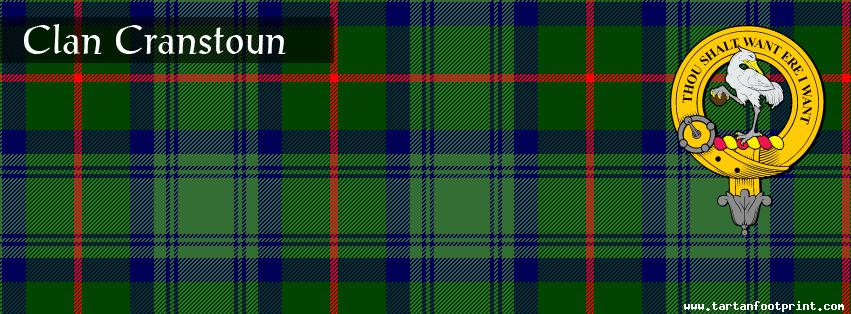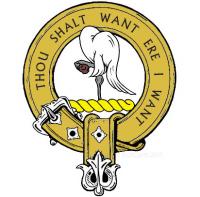
Clan Cranstoun
An area of Midlothian may have given rise to this name. Possibly from the Anglo Saxon meaning 'Place of the Crane'. The families that settled here and took the name owning lands around Edinburgh and Roxburghshire, the first recording of the name was Elfric de Cranston who is one of the witnesses to a charter by William the Lion in the Abbey of Holyrood around 1170. During the reign of Alexander II Thomas de Craystoun was recorded as giving over land in East Lothian to the church and a Hugh de Cranstoun signed the Ragman Roll in 1296.
The Cranstouns appear to have faired well until late in the 16th Century when their fortunes changed after Thomas and John Cranston were accused of conspiring with the Earl of Bothwell who had attacked Holyrood Palace. With members of the Cranstoun family being accused of treason Sir John Cranston fell foul of the law for harboring his family members. Finally his brother, Thomas was Executed in 1660 for his part in the infamous Gowrie Conspiracy.
The Cranstons relationship with the Monarchy faired better as the 17th Century progressed. In 1609 Sir John Cranstoun of Morristoun was given the title of ‘Lord Cranstoun’ after his service as captain of the guard to James VI.
While the family faired better with the King alas the same could not be said for the 'higher powers'. In the town of Kettle in Fife the Reverend William Cranstoun held strong Presbyterian views which were at odds with the King's reforms. An attempt was made to have him forcibly replaced during the middle of a sermon, despite his resistance he found himself branded as an outlaw. Finally in 1620 the Archbishop of St Andrews had him deprived of his charge.
During the English Civil War the Third Lord Cranston fought for the Royalists and was taken prisoner at the Battle of Worcester. Locked up in the tower of London under the protectorate most of his lands were forfeited.
The family allegedly holds a dark secret; A son of the fifth Lord secretly married a Roman Catholic. The husband later denied the marriage had taken place but his wife produced evidence to the contrary. The husband then took off for England and struck ap a relationship with a rich heiress. Not surprisingly her father was not too happy about the situation and the young Cranstoun attempted to smooth over the situation with a 'Love Potion'. Whatever the potion contained it certainly wasn't amorous as the father died of poisoning and the heiress was hanged for his murder.
George Cranstoun, who was also descended from the fifth Lord Cranston was a great friend of Sir Walter Scott. They had studied together at Edinburgh University. Whereas Sir Walter had followed a literary career George had pursued his legal profession rising to the position of Dean of the Faculty of Advocates in 1823.
The Cranstons military career also faired well. James, eighth Lord Cranstoun commanded the Bellerophon during a heroic battle against a large French fleet in 1795. He was appointed Governor of Grenada but sadly died from lead poisoning before he could take charge. Lieutenant Colonel Alastair Cranstoun of that Ilk was awarded the Military Cross and was recognised as chief in 1950. After his death in 1990 he was succeeded by the present chief.
The family seat is still at Corehouse in Lanarkshire.





